Diet
Prized and Proscribed: Our Ambivalent Feelings About Meat
The idea of eating meat elicits strong reactions.
Posted November 5, 2019
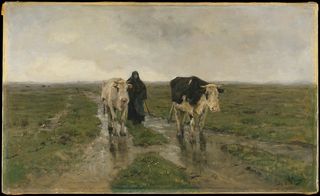
There is a “swiftly rising odor—an aroma whose Proustian echoes are decidedly more bus station men’s room than cows in the country” that heralds the arrival of science journalist Michael Pollan to a cattle feedlot more than a mile away. (The Omnivore’s Dilemma, 2006, pp. 65–66) Pollan describes these places as distinctly different from the farms and ranches of yesteryear—they are concentrated animal feeding operations (CAFOs). (p. 67)
Cows eat grass and are “nature’s natural lawn mowers” (Rimas and Fraser, Beef: The Untold Story of How Milk, Meat, and Muscle Shaped the World, 2008, p. 11), but here they are fed feather and chicken litter consisting of bedding, feces, and discarded bits of food, as well as chicken, fish, and pig meal. (Pollan, p. 76) Only after concern for mad cow disease (bovine spongiform encephalopathy) in the mid-1990s did these places stop feeding cows discarded cow parts. In the months before they are to be slaughtered, the cattle are fed corn to fatten them quickly. (Pollan p. 75) They are kept as healthy as possible by antibiotics. (Pollan, p. 78)
Likewise, Eric Schlosser, a few years earlier, writes (Fast Food Nation, 2002, p. 204) that a single hamburger can contain meat from dozens or even hundreds of different cattle. In 1996, the USDA found almost 79% of ground beef contained pathogens, including E. coli, that are spread primarily by fecal matter (Schlosser, p. 197) Even this week, several mid-Western states have reported salmonella contamination in ground beef, and inspectors, as of this writing, had yet to localize the source.
Instead of focusing on the primary cause of meat contamination, such as the feed given to the cattle; the overcrowding at the feedlots; the poor sanitation at slaughterhouses; the speed of processing the cattle, where some plants slaughter 400 cows an hour (Schlosser, p. 173); lack of stringent government oversight; and the inadequate training of workers, the meatpacking industry has taken to irradiating the meat, so-called “cold pasteurization.” (Schlosser, pp. 217-218) This is not unlike the more recent controversy (and legal action) directed at the mechanically disinfected beef product known as “lean finely textured beef” and "boneless beef trimmings” produced by heating the beef to melt off the fat and then treating it with ammonia to kill off the bacteria. (Scrinis, Nutritionism: The Science and Politics of Dietary Advice, 2013, p. 222)
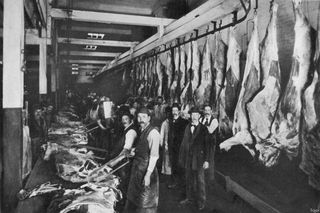
Ironically, at times, these descriptions of the dangerous and filthy conditions for workers and reports of contaminated meat seem not too far removed from what Lithuanian immigrant Jurgis Rudkus experienced in Upton Sinclair’s 1906 groundbreaking novel The Jungle. (SDE Classics Edition, 2019) Conditions back then at the turn of the 20th century were, of course, even more extreme: Sinclair described meat that had fallen on the floor and mixed with dirt, sawdust, and tuberculosis germs; poisoned rats and rat dung were all over the premises and might end up in the sausages. (Sinclair, p. 140) The spoiled meat, through “the miracle of chemistry,” could be given any color, flavor, or odor the industry chose. (Sinclair, p. 139) (For a thorough discussion of The Jungle, including the governmental regulations that ensued from publication of the novel, see the essay by Stephen Kosnar in Hektoen International.)
“There is little that is neutral about meat.” (Smil, Population and Development Review, 2002) One of Upton Sinclair's characters toward the end of the novel, lectures, "...meat is unnecessary as a food...and more likely to be unclean," (Sinclair, p. 356) and this speaker (reflecting Sinclair's own views) raises the provocative question, namely if "those who want to eat meat will have to do their own killing, how long do you think the custom would survive then?” (p. 356)
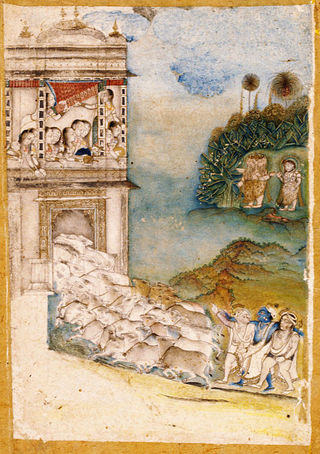
No other food has yet been so highly esteemed and yet so tabooed. “Paradoxically, it is “most prized and most proscribed.” (Fessler and Navarrete, Journal of Cognition and Culture, 2003) Pork is forbidden in Judaism and Islam, and beef and pork are forbidden in Hinduism and Buddhism. (Vranken et al., Environmental Science & Policy, 2014) Not only religion, but cultural beliefs, gender, socio-economic status, and ethnic differences may be factors in meat consumption. (Vranken et al., 2014)
By definition, red meat is considered cattle, sheep, goats (e.g., beef, veal, lamb, mutton, and goat) and does not include pig (e.g., bacon, pork, ham). Red meat consists of lean muscle and fat that can be throughout (marbled) or external. And processed meat contains at least 30% meat that has undergone preservation other than freezing, such as being cured, dried, salted, etc. (e.g., salami, sausages, canned meats). (Williams, Nutrition & Dietetics, 2007) Red meat is a good source of protein and provides all essential amino acids, niacin, vitamin B6, vitamin B12, phosphorus, zinc, iron, and essential omega-3 polyunsaturated fats, among other fats. (Williams, 2007)

How long have we been eating meat? The Bible says that God gave Adam and Eve “every plant with seeds…and every tree that has fruit with seeds” as food. (Genesis: 1:29) It was only after the Flood that God permitted Noah and his descendants to consume animal flesh, “but not meat with blood in it—Blood is life.” (Genesis 9.1–4) (Rimas and Fraser, p. 24; Kass, 214–215; Willard, Journal of Popular Culture, 2002) Ironically, though, all meat eaters do ingest some blood: only between 40% and 60% of all blood is lost in an exsanguination process. (Smil, Should We Eat Meat? Evolution and Consequences of Modern Carnivory, 2013, p. 8) Kosher butchering takes special precautions to remove blood, including by salting the meat. (J. Groopman, The New Yorker, 1/7/19; L. Groopman, personal communication, 10/30/19)
More scientifically, evidence from craniofacial skeletal remains (e.g., less indication of grinding and more on biting and tearing of animal flesh) and from fossil records indicates that we have had a “high reliance” on meat as a major source of protein and nutrition throughout much of our evolution. (Mann, Nutrition & Dietetics, 2007) Our “dietary flexibility,” i.e., our ability to be omnivores, may have been responsible for our success as a species. (Fessler and Navarrete, Journal of Cognition and Culture, 2003) Some researchers even believe we have a “hard-wired meat hunger.” (Leroy and Praet, Appetite, 2015)
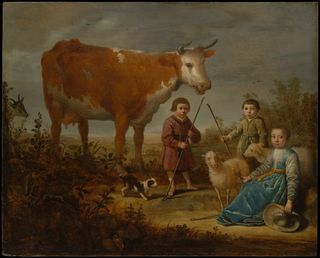
Twigg, though, (in:The Sociology of Food and Eating: Essays on the Sociological Significance of Food, edited by Anne Murcott, 1983, p. 26) notes that with the growth of urbanization, people have less contact with animals and there develops a “psychic wedge” between animals as food and animals as pets. Bulliet (Hunters, Herders, and Hamburgers, 2005, p. 3), likewise, describes the change from domesticity and the farming existence “of bygone days,” where daily contact with animals was a “normal condition" of life, to post-domesticity, where we live physically and psychologically far removed from animals that produce food and never witness animal slaughter. This leads to a "post-domestic conscience" (Bulliet, p. 20) where we experience “guilt, shame, and disgust” when we think of the industrial processes by which animals are "rendered into products." (Bulliet, p. 3) Sometimes, the "animal form is so altered" in preparation of a meal dish that we cannot recognize its animal origin. (Kass, The Hungry Soul: Eating and the Perfecting of our Nature, 1999, p. 145) Harari, in his book Sapiens: A Brief History of Humankind (2015), however, writes that those who work on these vast feedlots have stopped thinking of farm animals as "living creatures that could feel pain and distress" and instead, think of and treat them merely as machines (Harari, p. 342), perhaps to protect themselves from feelings of disgust.
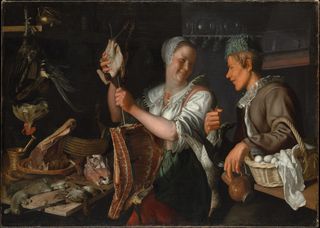
In general, animal products can elicit strong, primitive feelings of disgust and aversion in many people. (Fessler and Navarrete, 2003) Though meat is eaten universally for food, almost all objects of disgust originate from animals or animal products. (Rozin and Fallon, Appetite, 1980) The transition from dead animal to food involves cooking, roasting, smoking, use of spices, all of which help to disguise the original properties of meat. But anything that reminds us of the animal, such as a blood vessel, can arouse disgust. (Angyal, Journal of Abnormal and Social Psychology, 1941) Further, we are not indifferent to the food upon which an animal feeds (hence our disgust to hear that cattle are fed chicken and pig remnants). We are more likely to eat animals that are herbivorous than carnivorous. (Angyal, 1941) The disgust reaction, as a means of preventing “risky food-related behavior” and averting exposure to pathogens (e.g., bacteria and viruses), is often triggered by rotten food, blood, and feces. (Egolf et al., Appetite, 2019) In general, women tend to have a higher disgust sensitivity. Though disgust can mean different things in different cultures, the Food Disgust Scale, measuring disgust sensitivity—a kind of "physiological risk protection"—has been validated in ten countries. (Egolf et al., 2019)
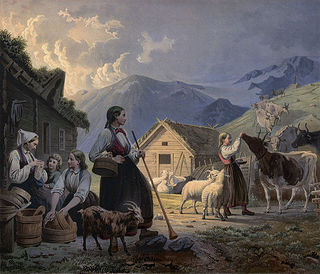
Bottom line: Paradoxically, red meat is our most prized food, known for its protein and nutritional value, but it is also our most tabooed. Some religions proscribe meat from cattle and pigs, and many have specific rituals about the slaughter of animals. Fossil and human bone remains reveal that we have been eating meat for millions of years. Even the Bible specifies that God allowed Noah and his descendants to eat meat after the Flood. Some believe we are "hard-wired" to eat meat, but the potential for contamination of our food supply, especially from meat products, remains an issue. Meat consumption can elicit strong emotions of guilt and shame because of the way animals are treated. Many even experience disgust at the thought of eating meat, particularly because we have gone from a domestic society where most people came directly in contact with animals to a post-domestic society where we have little direct experience with animal slaughter. Further, meat eating takes a substantial toll on the environment, a subject for another discussion.
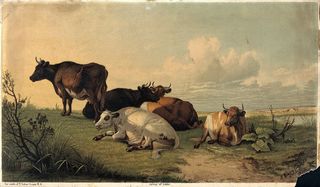
Please note: This is the second part of my two-part blog on meat. See my previous post for a discussion of the recent controversies about the health consequences of red meat intake.




